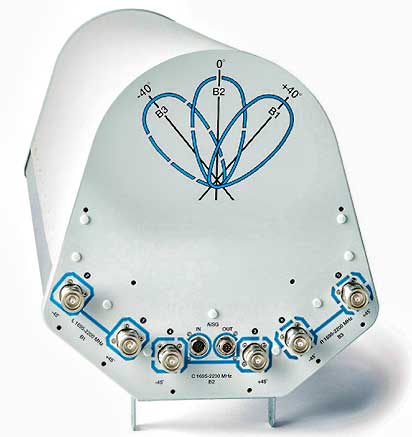Wireless network operators have a new, unique antenna option from CommScope to relieve overloaded cell sites and support high concentrations of subscribers in special venues.

The Tri-Beam Antenna from CommScope uses new lens technology to deliver three beams from a single antenna unit, enabling almost three times the capacity compared to a single-beam antenna
CommScope expects the Tri-Beam to find major acceptance as a capacity enhancement solution to overloaded macro networks and high-capacity locations.”
The innovative Tri-Beam Antenna uses new lens technology to deliver three beams from a single antenna unit, enabling almost three times the capacity compared to a single-beam antenna.
Part of the Andrew® portfolio of wireless solutions, the Tri-Beam Antenna enables wireless operators to avoid finding and building out new sites, whether macro or small cells. Wireless operators can improve traffic load balancing for network hot spots with the highly accurate three beams. They can also use the Tri-Beam Antenna as a venue solution when music festivals and other well-attended events strain network capacity. CommScope also pairs the Tri-Beam Antenna with remote electrical tilt (RET) to offer maximum flexibility for optimizing each beam.
“CommScope continues to invest in multi-beam antennas because they are so effective for adding capacity while managing interference in the radio access network,” said Kevin Linehan, chief technology officer, Antenna Systems, CommScope. “CommScope expects the Tri-Beam to find major acceptance as a capacity enhancement solution to overloaded macro networks and high-capacity venues.”
The Tri-Beam lens focuses antenna signals like a magnifying glass into three narrow beams, sculpting an overloaded sector into three sectors. The result is nearly three times the capacity as the original sector without adding a new cell site. When deployed in cell clusters, the Tri-Beam can achieve up to four times the capacity with the optimized overlap between cells.
“Mobile operators face tremendous competitive pressures that propel urgent capacity expansion requirements,” says Ken Rehbehn, principal analyst, 451 Research. “With advanced base station antenna technology driving more capacity into scarce cell site footprints, operators stand to sharply improve their customers’ experiences without incurring higher site lease costs.”
Significant performance benefits of the Tri-Beam Antenna include:
- Nearly three times the capacity with a peak capacity of up to four times for some sectors when deployed in cell clusters
- With four decibels more gain than a standard single-beam antenna, the Tri-Beam provides more than double the signal strength inside of the sector, resulting in better building penetration and at least 4 dB better signal to noise ratio (SINR), the crucial parameter for higher data throughput
- Superior ratio of desired to undesired signal thanks to optimized sector roll-off
- Better wind loading with the rounded form factor
To develop the Tri-Beam Antenna, CommScope partnered with Matsing, a leading provider of RF lens based solutions, to make lens technology into a commercially viable solution for base station antenna applications. Metamaterials used for the innovative dielectric lens reduce its weight by about 90 percent, making it viable for tower mounting.
CommScope will display the Tri-Beam Antenna at CTIA Super Mobility 2015 in Las Vegas, September 9–11.













